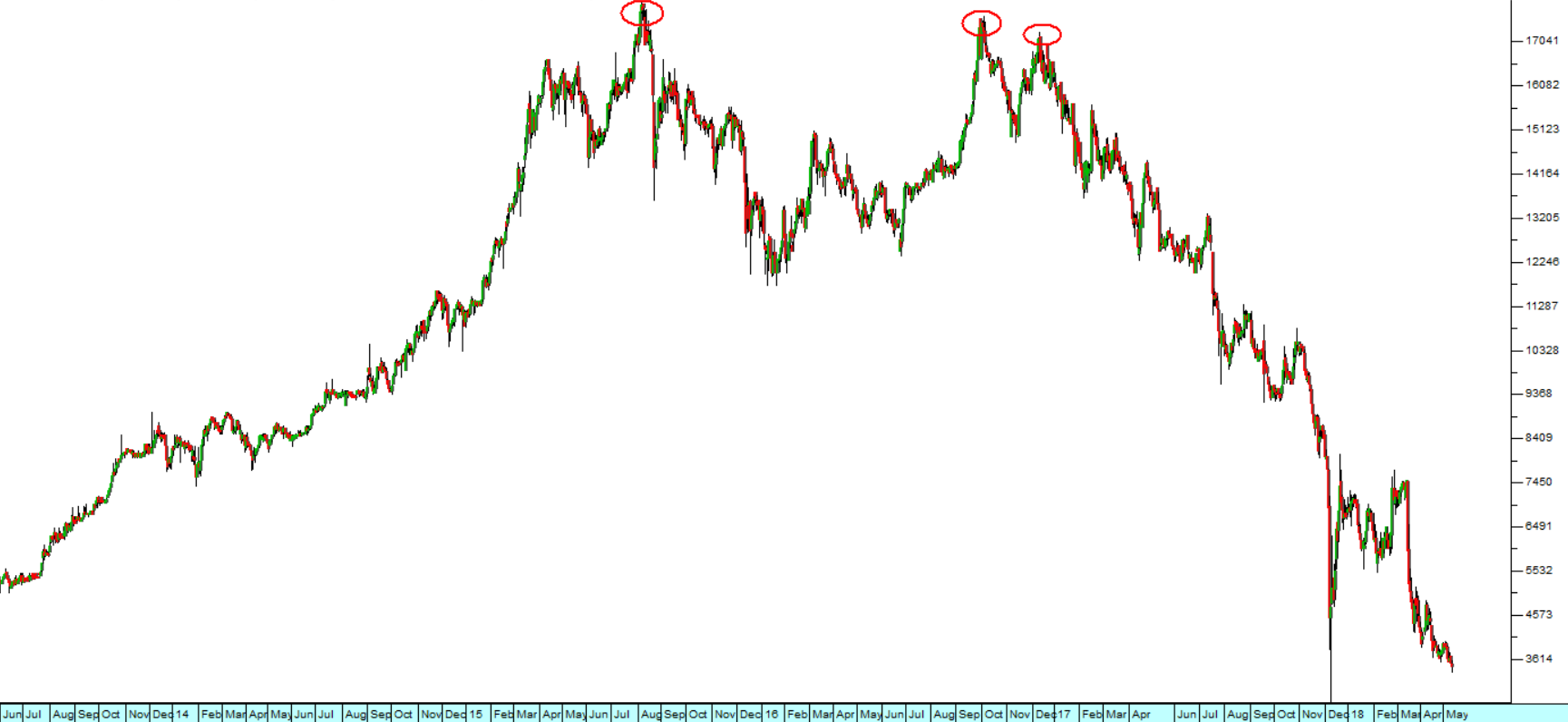Bitcoin's Collapse
We have said previously that cryptocurrencies like Bitcoin cannot be assessed using fundamental analysis – because they have no fundamentals. They have no balance sheet or income statement, and they generate no income for investors. For this reason, they can only be assessed technically - by looking at the charts.
In the absence of fundamental value, the price of Bitcoin is a direct and exclusive function of the collective belief of a segment of the investment population which has bought into the cryptocurrency idea. This idea is periodically disturbed by stories about corrupt cryptocurrency dealers, government’s that arbitrarily make laws about cryptos or Elon Musk blowing hot or cold.
Descending triple tops are quite rare in the charting world. For example, the share prices of both Steinhoff and EOH at different times made clear descending triple top formations before they began their respective collapses: Consider the chart of Enterprise Outsourcing Holdings (EOH) during 2015 and 2016:

You can clearly see the three tops, each lower than the previous one, followed by a massive collapse. Steinhoff is no longer listed, but it also made a descending triple top at around R90 a share before collapsing to less than R5.
Three-and-a-half months ago on 24th May 2024 we posted a tweet in which we said that Bitcoin, “...has completed a "descending triple top" which is probably the most bearish formation. We expect it to fall heavily from current levels.”
Consider what has happened since then:
.png)
Here you can see the three tops which prompted that tweet – and the two further descending tops which have occurred since then.
The descending tops are caused by the smart money off-loading their usually very heavy holdings into the hands of less well-informed and usually very enthusiastic amateurs. At each top, the smart money’s profit-taking soon overwhelms the enthusiasm of other, usually smaller, investors causing the price to drop. The smart money then withdraws to allow the market to recover and investors to become excited again. When the price approaches the previous high, they begin selling again and the pattern is repeated.
As you can see, with Bitcoin, the level of enthusiasm has been strong enough to permit no less than 5 consecutive descending tops, but the most recent was characterised by an exhaustion gap which shows that the buying energy is now dissipating.
It is also important that on Friday last week, Bitcoin fell to $54069 – breaking clearly down through the 200-day simple moving average. Many less-sophisticated investors use the 200-day moving average as a key determinant – so we believe that, while there are bound to be rallies, there will not be any further notable tops.
Our advice remains what it has always been regarding cryptocurrencies:
“If you have them, sell them; if you don’t have them, don’t buy them.”
← Back to Articles